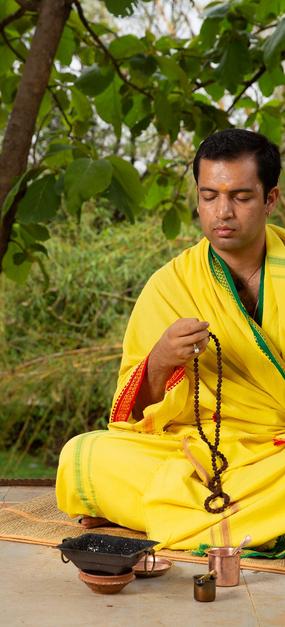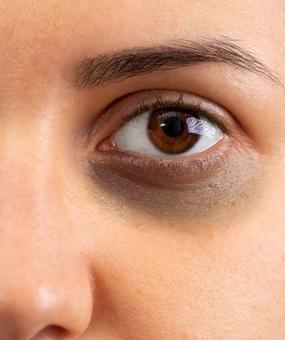In Sanskrit, the daily routine is called as Dinacharya. ‘Din’ means ‘day’ and ‘acharya’ means ‘to follow’ or ‘close to’. So, Dinacharya is an ideal daily schedule taking into account the nature’s cycle. In Ayurveda, the focus is levied on the early hours of the day as it is instrumental in setting the tone of your day.
Ayurveda believes that routine is a discipline for the body and mind which strengthens immunity and purifies the body of its wastes. With the help of simple healthy routines, one can clean the body and mind, balance, doshas, strengthen immunity and start the day on a refreshing and rejuvenating note.
Following simple routine in the morning will help you start the day on a blissful note. Here is your guide to a refreshing morning.
1. Brahma muhurta
One should wake up about one and a half hour before the sun rise so that you can synchronize with the rhythm of sun. Ayurveda recommends an auspicious time – Brahma Muhurta which means ‘the time of Brahma…the pure consciousnesses – for rising up in morning.
About an hour and a half before the sunrise, a great shift in energy fills space. Then, about half an hour before sunrise, a second boom of energy dawns in the atmosphere. Hope, inspiration and peace manifest at this time. This time is considered best for attaining bhram gyan (meditation and self analysis), supreme knowledge and eternal happiness. At this time, the environment is pure and calm and soothing and the mind is fresh after sleep.
Meditation at this time improves mental performance thus helps in increasing satva guna therefore subduing mental irritation or hyperactivity and lethargy which is contributed by rajas and tamas guna.
2. Power of Breath
Check through which nostril your breath is flowing more strongly. According to Ayurveda, the right nostril is solar-pitta, and the left nostril is lunar-kapha. The right side of the brain controls creative activity while the left side controls logical verbal activity. According to research, when one breathe through the left nostril then the right side of the brain is more pre-dominant and vice versa.
3. Positive Vibrations
Follow the ancient tradition of observing the lines in your palms and remember the Goddesses of Wealth, Knowledge and Power. Rub the fingertips with your thumbs in a circular soothing rhythm – right clockwise circles and then left anticlockwise circles. Rub the palms using fingertips and then turn the right wrist clockwise and the left wrist anticlockwise. First kiss the palm of that side of your body where the flow of breath is stronger, then kiss the other palm. (Kissing confers energy. By kissing your palm, you give your best vibrations to your most effective tool for self-expression.) Rub both hands together and move the palms slowly over your face, covering head, shoulders, arms, and legs, creating an energy shield which wards off negative influences for the whole of the day.
4. Protection Mantra
Recite the protection mantra that belongs to this simple but effective morning ritual. After reciting the mantra, sit silently with an empty mind for a few moments.
Karaagre Vasate Lakshmi
(In the front part of the hands, i.e. the fingertips, lives Lakshmi, the goddess of wealth)
Karamadhye saraswati
(In the middle part of the hands, i.e. the palm, lives Saraswati, the goddess of art and of learning)
Karamoole tu govinda
(In the end part of the hands, i.e. the root or wrist, lives Govindam, Lord Krishna)
Prabhate kara darsanam
(It is auspicious to see the hand in the morning)
5. Positive Step
Step out of the bed and touch the ground with the leg that corresponds with the side of the body where the breath is flowing dominant (check nostrils).
6. Clean Up
Rinse with cold water. Water is an electrical conductor and can never irritate sensitive tissues. Wash hands, face, mouth and eyes with cool water. Clean nose, teeth and tongue.
7. Meditate and Exercise
Relax – do pranayama until the breath flows evenly through both nostrils. Meditate while centering your energy in the heart chakra or at the third eye. Take a short, slow walk in the fresh morning air. Surround yourself with simple and soothing visuals, preferable white items like fresh and fragrant flowers with subtle colors.
Vyayama or physical exercise comprises usually of some yoga postures like Surya Namaskar or sun salutation and breathing exercises like Nadi Shodhan Pranayam. But it can be anything including a walk or a swim. Early morning exercises remove stagnation in the body and mind, strengthen the digestive fire, reduce fat and give you an overall feeling of lightness and joy as it fills your body with good prana. However, instead of strenuous exercise, exercising at one fourth to one half of your capacity is recommended.
8. Pamper Yourself
Massage the body (abhyanga) with sesame oil. Massaging the scalp, forehead, temples, hand and feet for about 2-3 minutes is sufficient.
9. Bathe Right
Bathe in water which is neither too hot nor too cold.
10. Noon – Time
Lunch should be taken early between 12-1 pm as it coincides with the peak period which is responsible for the digestion. Ayurveda recommends that the lunch should be the heaviest meal of the day. After the meal it is good to take a walk, to help the food digest. Anything more than a short nap should be avoided because sleeping in the day is prohibited in Ayurveda.
11. Twilight – Zone
This is a special time of balance between day and night. This is the time for evening prayers and meditations.
12. Dinner
Dinner should be taken around 6–7 pm. It should be lighter than the lunch. The dinner should be at least three hours before bedtime as gives the body ample time to digest the food. Sleeping just after the dinner with a heavy stomach should be avoided. Walk to aid digestion for about 10 – 15 minutes.
13. Bedtime
The ideal time to sleep is by 10:30 pm. To calm the system, one can massage the soles of the feet before going to bed.
Check once if you follow the best direction to sleep for a better sleep
~ Dr. Nisha Manikanthan, senior faculty, Art of Living. The author is also an International teacher in Panchkarma therapies (Sri Sri Ayurveda).





















